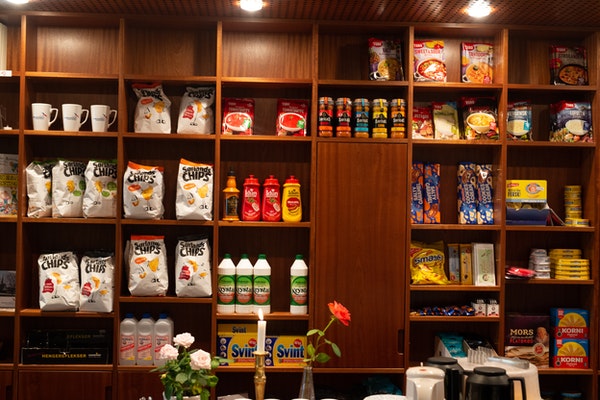I think (well actually I know) that being aware of what you have on hand is critical to maintaining your household budget. Home inventory control seems like a very boring routine to get into, but here’s why you should.
How can you possibly shop around for the best price, wait for a sale or a coupon on something you absolutely need right now?
You can’t. Many times you may be forced to go to a convenience store, and pay through the nose for that convenience. I have nothing against convenience stores, but does anyone NOT know that the prices are much, much higher than at a grocery store? If you’re trying to pay off credit card debt, shopping at a convenience store doesn’t help at all.
But anyway, keeping an inventory control system on goods that you use frequently is simple. Way back in history, just out of high school I worked in a factory. The principals of the material control department relate directly to inventory management in the home.
1. Know what you have on hand
2. Know at what rate you use your stock up
3. Know the lead time it takes to re-stock
4. Maintain enough stock so that you never run out at a critical time
5. And the purchasing department will always buy more than you ever need when there is a bargain. (Back then this was a nightmare, now at home, stockpiling saves me a bundle!)
So how do you use these principals at home? Easy.
1. Write a list of what you use a lot of in your home.
2. If you don’t know how quickly you use each item up, take a marker and write down the date you start using whatever package or good you are using. I write directly on the package. You may want a central sheet for all your goods.
3. When the package is empty, write down how quickly you use that unit up.
For example, if you just bought a bottle of shampoo, do you know how long it will last? You probably wash your hair the same average amount of times in a month, but do you really know how long a bottle lasts? Especially opaque bottles. But I think you get the idea.
With kids in the house, cereal is probably a critical area to examine… how many times have you picked up an empty box? (In my house the box was never “really” empty. There would always be a few scraps left… so the next to last to eat that cereal was not responsible for telling Mom to buy more… That same concept applied to the milk – “I didn’t finish it! Its not empty!” )
You can even get tricky with the cereal and save a little money by buying the warehouse or store brand and pouring it into the Brand Name box. Its worth a try! If the kids don’t notice a difference you can save a bundle. They just might not notice that the box never runs out! But back to inventory.
Once you know how long it takes to use a good up (that satisfies rule #2), you know how much time you have before you have to buy more. (That satisfies rule #3 and #4) If you find a bargain during that time, buy more than you need for the next period. You know you will use it eventually. Aha – Number 5! Wasn’t that easy?
I can hear you now saying, “Oh yeah, I know when I am going to run out of something, so I’ll just pick some more up.” Or you just write it down on a shopping list when you run out. You might be missing the point. When you have run out is not a good time to find a bargain!
Keep in mind that “running out to pick some up” is avoidable and unnecessary, and usually much more expensive than knowing where you stand and keeping stocked up.
Once you have established your monthly household budget, and have addressed the inventory control issues, you will be more ready to take advantage of sales and coupons on household goods.
If you’re struggling to pay off debt, ACCC can help. Schedule a free credit counseling session with us today.






